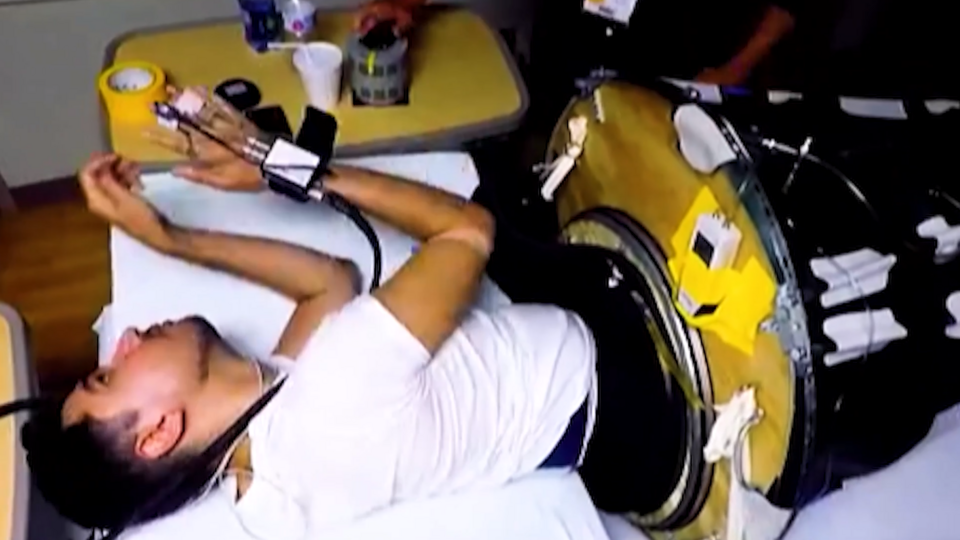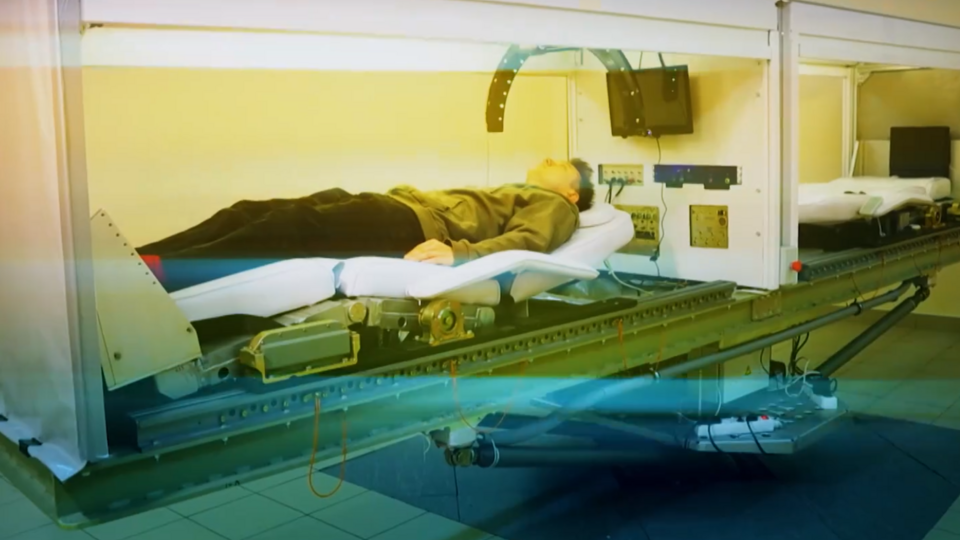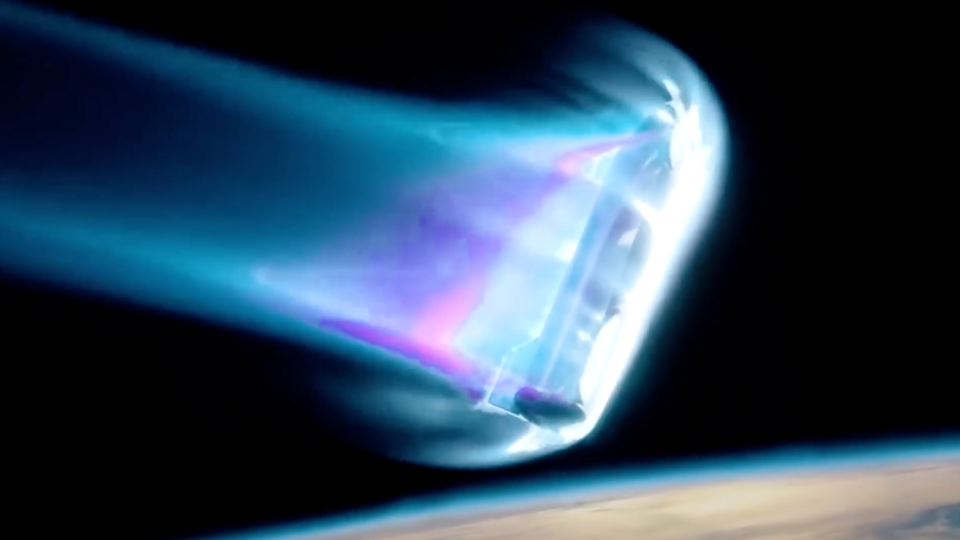Photo: © Video screenshot
In 2033, the first colonizers will go to Mars – this was announced by the China Rocket Technology Research Institute. Scientists have planned five manned flights to the Red Planet at once. They are going to build a habitable base there, extract water from the depths and generate electricity. But first, robots will be launched into space reconnaissance.
“By 2030, robots should explore potential sites for establishing a base and build systems for extracting resources. Chinese researchers also want to equip several space stations for stops on the way to Mars. Ideally, they plan for a flight to the planet and back to take several hundred days.”said space technology columnist John DeVille.
However, many dangers await the first Martian colonizers along the way. According to scientists, you can get lost, go blind, go crazy and even be fried alive. What methods of protection against space threats have already been invented? And how do they work? Talks about this program “Science and Technology” with Mikhail Borzenkov on REN TV.
Sleeping bag for blindness
But on the way to Mars, dangers await colonizers everywhere, one of which is blindness. The fact is that in conditions of weightlessness, the liquid in the human body, as they say, hits the head and puts pressure on the eyes. Such tension can flatten the eyeball, causing the person to develop papilledema and go blind.
Scientists at the University of Texas have come up with a way for future Marsonauts to see the Red Planet with their own eyes. A sleeping bag will help them with this – but not the one they take with them on hikes. This design looks like an ice cream cone. In flight, during sleep, the bag will compress the lower part of the body, and the balance of fluid in the body will be restored, as with gravity.
“On Earth, while you are standing or sitting, gravity distributes fluid from your head to your body. But in space, this process does not occur. Our bag, using vacuum technology, will draw out the fluid that would accumulate in the head. The invention has already been tested on 10 volunteers. They are in “We lay in bed for three days. Those who slept in the bag did not have any deterioration in their vision.”“, noted Benjamin Levine, a cardiologist at the University of Texas Southwestern Medical Center and the creator of a sleeping bag for astronauts.

Vibrating bracelets for orientation in space
Future space colonists can be let down not only by their eyes, but also by their instincts and reflexes. Moving around the Earth, we do not realize that we do this thanks to gravity, which helps us navigate in space, determine where is up and where is down.
However, weightlessness confuses the body. Instincts say one thing, eyes say another, brain says something else, and the astronaut gets lost in space. To prevent this from happening, engineers at the American Brandeis University suggest that astronauts wear vibration bracelets. These elastic bands are attached to the wrists, shoulders and forearms. A special algorithm tracks a person’s position in space. Using vibration, the device transmits signals to the vestibular system through the skin. At this moment, the brain understands where is up and where is down.
“The vestibular system receives a signal from vibration bands in our inner ear, which is where the so-called otoliths are located. These are cells with tiny structures. When we move, gravity attracts these structures, transmitting signals to the brain about how much our balance is disturbed. Vibration bands have already been tested on volunteers, and they showed good results”explained NASA engineer Wendy.

Cosmic psychotherapist
Vibrating bracelets, like navigators, will help you navigate in weightlessness, but will not eliminate the very cause of disorientation. Russian scientists realized that the problem is not only physiological.
“In space you are constantly disorientated, and you almost go crazy because you can’t feel the solid ground under your feet.”says NASA astronaut Scott Kelly.
He stayed on the ISS for a whole year. According to doctors, such missions do not go unnoticed. Scientists from South Carolina analyzed MRI results of astronauts before and after flights. According to them, changes appear after three months of weightlessness. And what can we say about a long flight to Mars?
To prevent future Marsonauts from catching madness among the stars, Russian scientists have created a space psychotherapist. In a white centrifuge, a person is placed on a support, that is, a bed, and is fastened. The cabin starts to move and rotates like a carousel. The blood is redistributed towards the legs, and the astronaut experiences the “earth gravity” familiar from birth. So the head returns, as they say, to normal, and the pressure in the skull decreases.

“The lodgment is multifunctional. It can change its position from horizontal to semi-sitting, semi-lying. At the end of the console, where the subjects rest their feet, we can install interchangeable exercise equipment. This can be a bicycle ergometer or a stepper. That is, to create a dynamic static load on the lower limbs.”,” explained Milena Koloteva, head of the Laboratory of Physiology of Acceleration and Artificial Gravity at the Institute of Medical and Biological Problems of the Russian Academy of Sciences.
What is important is that after the attraction, hygiene bags will not be required. Unlike world analogues, in which subjects feel sick. This does not happen in the Russian centrifuge thanks to the augmented reality system.
“The development of this cabin is such that we can create virtual reality while rotating. This could be the Martian surface, walking through a forest near Moscow, and so on. At the moment, in our research, we are using Charlie Chaplin films as a distraction gadget and psychological support. Effect amazing, the guys love it”,” Koloteva noted.
Protection from cosmic radiation
Scientists have figured out how to keep Marsonauts sane, but what to do with the ubiquitous cosmic radiation?

Scientists at the University of Wisconsin at Madison suggest using a shield to protect yourself from radiation when flying to the Red Planet. And not only for the astronauts, but for the entire spacecraft. Physicists want to create an artificial magnetic field, similar to the earth’s, around the living quarters of the device.
“We have developed a design for lightweight, deployable magnetic coils with mechanical support. This system amplifies an external magnetic field that can deflect up to 50% of charged particles of ions and protons. The design is based on the arrangement of magnets that create a strong field on one side and a strong field on the other. reduced to almost zero. If you place metals in a circle, you get a magnetic bubble.”,” NASA Research Center physicist Tony Slaba shared the details.
This bubble will repel radiation from the outside, but inside will retain a field similar to the earth’s. But hiding in a bubble all the time won’t work. Astronauts will periodically have to go overboard to carry out various work, and there a new danger will await them.
Lifebuoy for an astronaut
During any outing, a safety rope connects a person to the ship. What if it breaks? To avoid such tragedies, scientists at Samara National Research University have created a lifebuoy, or rather, the concept of a nanosatellite. It will catch up with the astronaut like a harpoon, dock with the spacesuit and take it in tow.

“This device has the ability to identify an emergency situation, that is, to determine that the astronaut has entered free movement, conditionally determine the parameters of this relative movement, and calculate the required angle or required direction.”, says Doctor of Technical Sciences, Professor, Head of the Interuniversity Department of Space Research at Samara University. Queen Igor Belokonov.
What are heat shields for?
Let’s imagine that astronauts reached Mars and even landed, and perhaps even built a base. But sooner or later a person will have to return to Earth, and here it is important to fly home safely. After all, the most difficult thing during space travel, as in terrestrial aviation, is not only takeoff, but also landing. When the ship enters the planet’s atmosphere, it heats up to incredible temperatures. To prevent the astronauts from getting fried inside, the body of the apparatus is covered with so-called ablative protection – a layer of asbestos and phenol-formaldehyde resins. They take the brunt of the heat shock and protect the internal compartments.

One problem is that part of the skin completely burns out during planting. Therefore, after each mission, the protective heat shield must be updated. Now imagine that you will have to carry supplies of these screens to Mars – this is expensive and inconvenient. British scientists have figured out how to make heat shields reusable.
“When the ship enters the atmosphere, the shield made of heat-resistant material unfolds, distributes the heat flow and thereby protects the rocket. When the ship is in outer space, the shield automatically folds into a compartment. The mechanism works in the same way when returning to Earth. And so that the landing is soft , the rocket will be met by an autonomous rescue boat, on which it will land.”,” said co-founder of the company that developed the heat shield, Andrew Bacon.
Thanks to such heat shields, space missions will become more accessible, the developers are sure. This means that the conquest of Mars will no longer be such an impossible task.
About the most incredible achievements of progress, discoveries of scientists, innovations that can change the future of humanity, watch in the “Science and Technology” program with host Mikhail Borzenkov on REN TV.
Source: Ren
Alfred Hart is an accomplished journalist known for his expert analysis and commentary on global affairs. He currently works as a writer at 24 news breaker, where he provides readers with in-depth coverage of the most pressing issues affecting the world today. With a keen insight and a deep understanding of international politics and economics, Alfred’s writing is a must-read for anyone seeking a deeper understanding of the world we live in.
